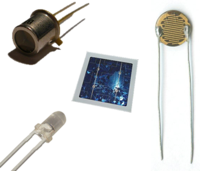
Photo from wikipedia
The speciation of Cu and Fe in wine was assessed by a number of methodologies and those with superior performance were utilised on 49 wines and compared to compositional data.… Click to show full abstract
The speciation of Cu and Fe in wine was assessed by a number of methodologies and those with superior performance were utilised on 49 wines and compared to compositional data. The adopted analytical strategies were stripping potentiometry, HPLC and an extraction (solid-phase or liquid-liquid) followed by atomic absorption or optical emission spectroscopic measurement. Stripping potentiometry was specific for sulfide-bound Cu in wines, and showed that this was the predominant form of Cu. A solid phase extraction technique provided a hydrophobic fraction of Cu that was specific for sulfide-bound Cu in white wine but red wine matrix effects hindered isolation of sulfide-bound Cu. The other methods assessed either perturbed the sulfide-bound Cu or were not sufficiently sensitive. The solid phase extraction method enabled routine fractionation of Fe in red and white wines whilst the additional techniques surveyed either measured total Fe or suffered from background contamination.
Journal Title: Food chemistry
Year Published: 2019
Link to full text (if available)
Share on Social Media: Sign Up to like & get
recommendations!